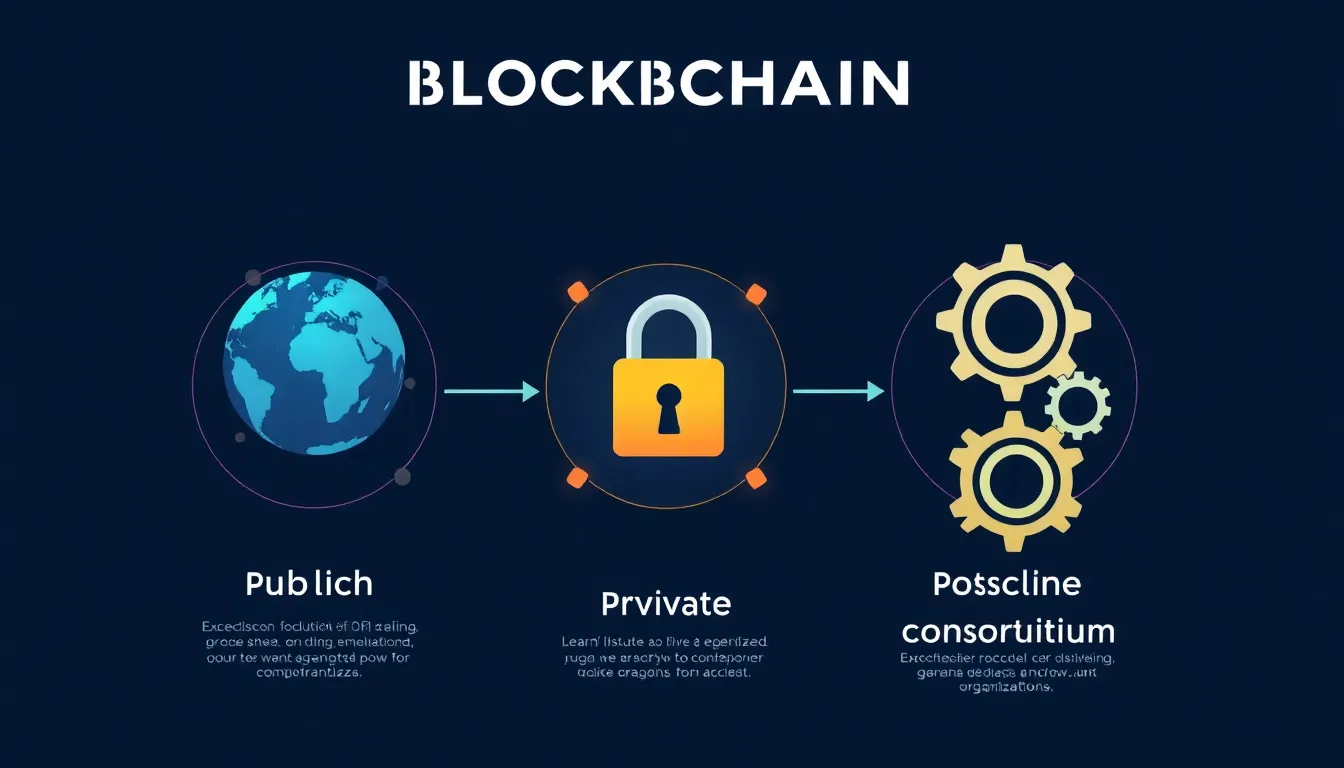In a world where digital currencies are popping up faster than a cat video goes viral, understanding the blockchain ecosystem is like finding the secret sauce to a winning recipe. It’s not just about Bitcoin anymore; it’s a vibrant universe of technology, innovation, and, let’s be honest, a bit of nerdy magic.
Table of Contents
ToggleUnderstanding Blockchain Ecosystem
The blockchain ecosystem encompasses a network of technology, participants, and processes that drive digital currency innovations. Understanding this ecosystem is crucial for grasping the full scope of blockchain’s impact.
Definition of Blockchain
Blockchain refers to a decentralized digital ledger that securely records transactions across multiple computers. Each transaction forms a block, linked in chronological order to create an immutable chain. This structure enhances transparency and security, enabling trust in the data without relying on intermediaries. Organizations leverage blockchain technology for various applications, including financial services, supply chain management, and identity verification.
Key Components of Blockchain Ecosystem
Key components play vital roles in the blockchain ecosystem. These include nodes, which serve as individual participants in the network. Miners validate transactions and add them to the blockchain, ensuring consensus. Smart contracts automate processes and enforce rules without human intervention. Additionally, tokens act as digital assets that facilitate transactions and represent value within the network. Understanding these components reveals how they contribute to the overall functionality and stability of blockchain systems.
Types of Blockchains

Numerous blockchain types populate the ecosystem, each serving specific purposes and audiences. Understanding these types clarifies their roles and applications.
Public Blockchains
Public blockchains operate on a decentralized network, allowing anyone to join and participate. Transactions within these systems are open and transparent, enabling users to verify and audit history. Bitcoin and Ethereum exemplify public blockchains, showcasing expansive accessibility. Security derives from consensus mechanisms like Proof of Work, where participants validate transactions. Operating in an open environment fosters trust but can invite scalability issues.
Private Blockchains
Private blockchains restrict access to a select group of participants. An organization typically manages these networks, offering increased control over data and transactions. Members can conduct transactions privately while enjoying enhanced efficiency. Financial institutions often adopt private blockchains for internal processes. Their centralized governance grants significant flexibility, though it sacrifices some transparency.
Consortium Blockchains
Consortium blockchains represent a hybrid approach, combining elements from both public and private types. Businesses or organizations form a consortium to manage this type of blockchain collaboratively. By sharing the ledger among multiple entities, consortium blockchains enhance trust between participants while maintaining some privacy. This model is popular in industries like supply chain management and healthcare, where secure data sharing proves essential.
Blockchain Technologies
Blockchain technologies are transforming industries by enabling secure, transparent, and decentralized processes. Key innovations include smart contracts and decentralized applications, which play crucial roles within the ecosystem.
Smart Contracts
Smart contracts automate and enforce agreements directly on the blockchain. These self-executing contracts contain code that executes actions when specific conditions are met. They eliminate the need for intermediaries, reducing costs and enhancing efficiency. For instance, in supply chain management, smart contracts can automatically release payments upon verification of delivery, streamlining operations. Security is another advantage, as stored data within smart contracts is immutable and tamper-proof, ensuring trust among participants.
Decentralized Applications (DApps)
Decentralized applications, or DApps, function on a blockchain network without a central authority. They allow developers to create software that operates peer-to-peer, offering various services across multiple sectors. Features of DApps include enhanced transparency since all transactions are recorded on the blockchain, making it difficult to manipulate data. Users interact with DApps through digital wallets, ensuring ownership of assets and data. Popular DApps range from decentralized finance platforms to gaming applications, showcasing the versatile nature of blockchain technology.
Challenges in the Blockchain Ecosystem
Challenges exist within the blockchain ecosystem that can hinder its growth and adoption. Understanding these challenges provides insight into the potential evolution of this technology.
Scalability Issues
Scalability remains a significant hurdle for blockchain networks. As transaction volume increases, many blockchains struggle to maintain speed and efficiency. Bitcoin processes around seven transactions per second, while Ethereum handles approximately 30. In contrast, traditional payment systems like Visa can handle over 24,000 transactions per second. As demand for decentralized applications grows, finding solutions to improve scalability is crucial. Layer 2 solutions, such as the Lightning Network for Bitcoin, aim to address this problem by processing transactions off the main chain. Optimizing scalability will enhance user experience and broaden the appeal of blockchain technology.
Regulatory Concerns
Regulatory uncertainty poses another challenge for blockchain adoption. Various governments approach blockchain and cryptocurrencies differently, with some embracing innovation while others impose strict regulations. Many countries implement rules to combat fraud, prevent money laundering, and protect consumers. Such regulations can stifle innovation by limiting the development of new projects. In addition, the lack of consensus on regulatory frameworks creates confusion among stakeholders. Establishing clear and supportive regulations could foster a healthier environment for blockchain growth. Addressing these regulatory concerns is essential for the sustainable advancement of blockchain technology.
Future of Blockchain Ecosystem
The blockchain ecosystem is poised for significant advancements. Innovations and trends will shape its trajectory and broaden its application scope.
Trends and Innovations
Interoperability among various blockchains emerges as a major trend. Solutions that allow different blockchain networks to communicate will enhance efficiency. Furthermore, the rise of decentralized finance (DeFi) platforms is transforming traditional financial services, allowing users to lend, borrow, and earn interest without intermediaries. Other noteworthy innovations include zero-knowledge proofs that improve privacy and scalability for transactions. In addition, central bank digital currencies (CBDCs) are gaining traction with governments exploring digital alternatives to physical cash. Sustainable blockchain practices and energy-efficient consensus mechanisms also gain momentum, addressing environmental concerns.
Potential Use Cases
Blockchain technology finds relevance across numerous sectors. Supply chain management leverages it for transparency, allowing real-time tracking of products. Healthcare applications enable secure sharing of patient data while maintaining privacy compliance. Real estate transactions benefit from smart contracts that streamline processes, reducing fraud. Additionally, the gaming industry embraces blockchain for in-game asset ownership and trade. Voting systems are being tested for their potential to enhance electoral integrity and reduce fraud. Each of these use cases reflects blockchain’s growing integration into everyday processes and its transformative impact on various industries.
The blockchain ecosystem is a complex and evolving landscape that holds immense potential for various industries. Its ability to enhance transparency security and efficiency is reshaping traditional processes. As innovations like smart contracts and decentralized applications gain traction the transformative power of blockchain becomes increasingly evident.
While challenges such as scalability and regulatory uncertainty persist addressing these issues will pave the way for broader adoption. The future looks promising with trends like interoperability decentralized finance and sustainable practices driving growth. As blockchain continues to integrate into everyday operations its impact will only expand making it essential for individuals and organizations to stay informed and engaged in this dynamic field.









